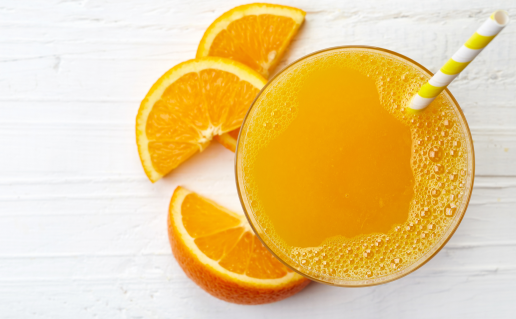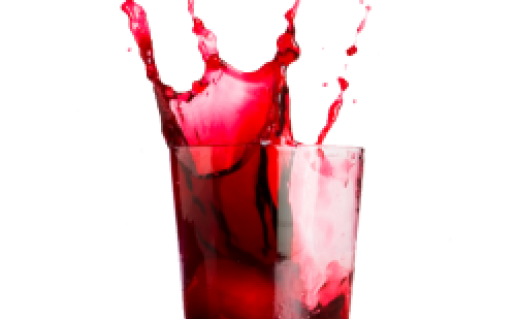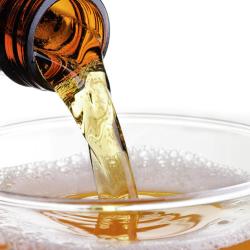Fruit Juice Stain Removal
Did you know that every year, the average American drinks over 5 gallons of orange juice? That’s a lot of vitamin C. But with so many types of fruit juice to choose from, orange juice isn’t the only juice that gets major love.
When you’re in the supermarket, you can’t help but notice the overwhelming number of choices when it comes to fruit juice. Covered in multi-colored packaging with clever marketing slogans, it’s often tough to decide which juice container to throw in your cart!

Types of Fruit Juices Consumed in the US
There are definitely quite a few types of fruit juice to choose from, including:
- Lemonade
- Grapefruit
- Pomegranate Juice
- Acai Berry Juice
- Apple Juice
- Black Cherry
- Cranberry Juice
- Tomato Juice
- Carrot Juice
- Blueberry Juice
- Cran-Apple Juice
- Grape Juice
According to the International Markets Bureau, in 2010, “the fruit/vegetable juice retail market in the US was valued at US $16.2 billion. The most popular fruit/vegetable juice category was 100% juice, with US $8.8 billion in retail sales.” The International Markets Bureau also found that “most fruit juice consumption takes place during a meal (93%), while 7% are consumed as a snack. Breakfast accounts for 70.5% of consumption, followed by lunch (11.8%) and dinner (10.6%).” Just a few more juicy facts for you!
It’s quite clear Americans love their juice. But what’s really in all of this deliciousness?
Chemical Components of Fruit Juice
Fruit juice is a liquid that occurs naturally in fruit tissue. In order to manufacture juice, you have to squeeze or macerate the flesh of the fruit, without applying solvents or heat.
But which chemicals are you actually drinking once the juice is in your cup?
Tropicana, for example, has many different lines of juice that contain different amounts of chemicals. Their Pure line of juices contain nothing but 100% fruit juice. In other types of juice, you’ll find these chemicals:
- calcium hydroxide
- vitamin D3
- fish oil and fish gelatin
- vitamin E acetate
- malic and citric acid
- beta carotene
- calcium citrate
- ascorbic acid
Chemical Components of Grape Juice
Now let’s take a look at another kind of fruit juice to see if the chemicals are similar. Turns out that grape juice contains a natural plant chemical called resveratrol, which is in the polyphenol chemical family.
The most of the reservatol can be found in the skin of the grapes. The following chemicals can also be found in grape juice:
- calcium lactate
- calcium gluconate
- vitamin C
- grape juice concentrate
- filtered water
Fruit Juice Stain Removal
Now that we’ve explored a bit about what fruit juice is made of, let’s take a look at the ways you can remove fruit juice stains from your home. Coit offers a series of guides to help you get rid of fruit juice stains on your own.
Whether you’re wondering how to remove fruit juice stains from carpet or need fruit juice stain removal tips for your upholstery, we’ve got step-by-step instructions to keep your home looking fresh and clean.
For more advanced fruit juice stain removal that requires professional attention, explore Coit’s Carpet Cleaning & Upholstery Cleaning services to learn more.
How to Remove Fruit Juice Stains from Carpet
COIT's guide to Removing Fruit Juice Stains from Carpet
With the hustle and bustle of life on the go, there’s nothing you can do to prevent a few accidents on your carpet from time to time. No matter how careful you or your loved ones may be, one of these stains just may end up being fruit juice.
But like they say, there’s no use crying over spilt milk – or fruit juice – right? With Coit’s guide to removing juice stains from carpet, you’ll have a few do-it-yourself stain removal methods to turn to when unexpected spills cross your path.
Read on to learn more about these quick and easy solutions for apple juice stains, orange juice stains and more.

How to Get Juice Stains Out of Carpet – Method # 1
When it comes to removing juice stains from carpet, you want to act as quickly as possible before the stain sets in.
- Blot the fruit stain with a paper towel, blotting away as much of the liquid as possible. You can also use a clean cloth.
- Spray lukewarm water directly onto the stain. Make sure it’s lukewarm, not hot.
- Blot the stain again using paper towels, or a clean white cloth. You want to avoid using a circular motion when you’re wondering how to get juice stains out of carpet; the best way to blot the stain is by applying pressure to the stain and removing the paper towel or cloth, repeatedly.
- If the juice stain is still visible, mix ¼ teaspoon of carpet shampoo with one liter of warm water in a bucket. Stir the solution.
- Apply the solution directly to the stain. Blot the stain with the towel repeatedly.
- Rinse the juice stain with warm water. Place a clean, dry towel over the stain and place a heavy object over the towel to hold it in place. This will help apply continuous pressure to the affected area when you’re wondering how to remove juice stains from carpet.
- Wait a few hours before removing the towels and object. Eventually, the stain should no longer be visible.
Trouble removing your stain? Find discounts in your area - Limited time only!
How to Get Juice Stains Out of Carpet - Method # 2
Removing juice stains from carpet can also be achieved using this do-it-yourself method:
- Using a paper towel or clean cloth, blot up as much of the stain as possible, as mentioned above.
- Take a neutral dishwasher detergent and mix it with a cup of warm water. Apply this onto the fruit juice stain and blot.
- Mix 2/3 cup of water with ½ cup of white household vinegar. Pour this solution into a spray bottle, and apply directly to the stain.
- Repeat step 2 using the dishwasher detergent.
- Clean the affected area using tap water and a damp paper towel. Apply dry towels to the area and place a heavy object on top of the towel for a few hours.
- If the fruit juice stain is still visible after a few hours, moisten the stained area with a bit of 3% hydrogen peroxide. Let this sit for one hour. Repeat until the stain is removed.
- Apply more paper towels, and then weigh them down with a heavy object.
These at-home stain removal methods should solve your problem of how to remove juice stains from carpet. If your carpet requires more in-depth cleaning, consider exploring Coit Carpet Cleaning Services. Don't forget to check out our coupons!
Remember to always do a spot removal test on a portion of carpet or upholstery that is normally not visible. These are suggested treatments only and COIT can't be held accountable for any damage sustained by the use of the treatments in this spot removal guide.
How to Remove Grape Juice Stains from Carpet
COIT’s Guide to Removing Grape Juice Stains from Carpet
Do grape juice stains on your carpet make you cringe? There’s something about removing grape juice stains that seems daunting. Maybe it’s the color that makes us positively sure that our fresh, plush carpet must be ruined.
Well, Coit is here to let you know that you need not panic. Removing grape juice stains is actually something you can do on your own, if you act quickly. With Coit’s do-it-yourself guide, you’ll learn how to remove grape juice stain from carpet by following the steps below.

How to Get Grape Juice Out of Carpet – Method # 1
Removing grape juice stains doesn’t have to be so bad. All you need is a sponge, some lemon juice, and a brush with soft bristles.
- Blot up as much of the grape juice stain as possible using a wet sponge. It’s best to work your way from the outside of the stain towards the inside – that way you won’t spread the grape juice to other areas of the carpet.
- Pour a generous amount of lemon juice directly onto the stain. Blot the stain using a dry cloth.
- Use the brush to brush in more lemon juice.
- If you find that this method does not remove grape juice stain from carpet, try applying some white vinegar directly onto the stain.
- Repeat step 4 until the grape juice stain disappears.
- Follow up by using a spray-in carpet foam cleaner to get rid of any grape juice residue.
Trouble removing your stain? Find discounts in your area - Limited time only!
How to Remove Grape Juice Stains – Method # 2
COIT offers you another way to remove grape juice stain from carpet. Check out how a little club soda can keep your carpet looking fresh.
- As soon as you discover the grape juice stain, blot as much of the excess liquid as you can, as fast as you can. You want to get rid of any liquid that hasn’t been absorbed into the carpet before you start the stain removal process.
- Wet a clean cloth with a generous amount of club soda. Press the cloth directly onto the stain (don’t rub the stain) to absorb the grape juice.
- Repeat as necessary until the stain is no longer visible.
- If you can still see the stain, pour a generous amount of salt directly onto the stain. Who knew that a little table salt could answer the question of how to remove grape juice stains?
How to Get Grape Juice Out of Carpet – Method # 3
- Combine one tablespoon of ammonia with two cups of warm water.
- Using a clean sponge, soak the sponge in this solution.
- Blot the grape juice stain directly until the stain begins to absorb.
- Sponge the stain with cold water to rinse, then blot dry with a clean cloth.
If you’ve tried these above techniques at home and you’re still asking yourself how to get grape juice out of carpet, don’t panic. COIT offers Professional Carpet Cleaning Services. Explore our professional services today to learn more. Don't forget to check out our coupons!
Remember to always do a spot removal test on a portion of carpet or upholstery that is normally not visible. These are suggested treatments only and COIT can't be held accountable for any damage sustained by the use of the treatments in this spot removal guide.








